Introduction: Beyond one-size-fits-all solutions
Technology drives business success today, but many organizations struggle with software that doesn’t quite fit their needs. Think about your own experience: Have you ever found yourself creating spreadsheet workarounds because your current systems can’t handle a particular task? Or perhaps you’ve watched your team toggle between multiple applications to complete what should be a simple process?
You’re not alone. According to Asana’s “2023 Anatomy of Work Global Index,” knowledge workers spend about 28% of their workday on tasks that don’t directly contribute to their core job function—with inefficiencies driven by disjointed systems, redundant tools, and insufficient processes.
While many businesses rely on standard, off-the-shelf software solutions, there comes a point when these generic tools may hold you back rather than propel you forward. Let’s explore what custom software actually is, and the five common signs that your business might benefit from a more tailored approach.
What is custom software?
Tailored to your unique business needs
Before diving into the signs, let’s clarify what we mean by “custom software.” Unlike off-the-shelf products designed for mass market use, custom software is developed specifically for your organization’s unique needs and challenges. Think of it as the difference between buying a suit off the rack versus having one tailored to your exact measurements.
Custom software can take many forms:
- A completely new application built from the ground up
- Specialized add-ons that extend existing systems
- Integration platforms that connect separate software systems
- Unique user interfaces that simplify complex workflows
When to consider the custom approach
The most effective custom software solutions align perfectly with how your business operates, addressing specific pain points and supporting your unique processes. Now, let’s look at the signs that might indicate it’s time to consider this approach.
Sign #1: Your workflows don’t fit standard solutions
When standard processes become limitations
Consider this scenario: A distribution company built its reputation on next-day delivery for specialty products. Their competitive advantage came from a unique routing system that accounted for special handling requirements and priority customers. When they tried implementing standard logistics software, they discovered it couldn’t accommodate their specialized process without significant compromises.
Most standard software is designed around common industry practices—which works well when your processes align with these norms. But business success often comes from doing things differently than competitors. When your competitive advantage stems from unique workflows, forcing these into generic software can dilute what makes your business special.
Research from BPTrends’ “The State of Business Process Management 2020” report shows that 74% of companies believe their competitive differentiation comes from unique business processes, yet many struggle to find software that supports these differences.
Protecting your competitive edge
Ask yourself:
- Do your most effective processes differ from typical industry practices?
- Have you found yourself saying, “We just do things differently here”?
- Do clients choose you because of your unique approach to service delivery?
If you’ve nodded along to these questions, your distinctive processes might benefit from software that’s built around your way of working, rather than forcing your operations to conform to someone else’s idea of best practices.
Imagine a healthcare provider with patient information scattered across different systems: one for scheduling, another for medical records, a third for billing, and yet another for inventory. Staff constantly switch between applications, manually transferring information and inevitably introducing errors. Management lacks a complete view of operations, making strategic decisions difficult.
This scenario plays out across industries. According to research from Okta’s “Businesses at Work 2023” report, employees use an average of 9.4 different applications in their daily work, with 43% spending at least an hour daily just navigating between these systems.
The challenge isn’t just having multiple systems—it’s the disconnection between them. While many standard software solutions excel at specific functions, they often struggle to share information effectively.
Breaking down the data silos
This creates several business problems:
- Information becomes siloed, preventing a unified view of operations
- Employees waste time on duplicate data entry and system switching
- Customers receive inconsistent experiences when interacting with different departments
- Valuable insights remain hidden because data can’t be analyzed holistically
Integration tools can sometimes bridge these gaps, but they often provide only basic data sharing. When your business relies on complex workflows that span multiple systems, custom integration or a unified platform might be the more effective solution.
Sign #3: Your business is evolving, but your software isn’t
When technology constrains growth
A growing financial services company wanted to introduce innovative products to clients. Their existing software, while adequate for current offerings, couldn’t support these new initiatives. Each time leadership proposed a new direction, they hit the same roadblock: “Our system can’t do that.” Instead of enabling growth, their technology had become a limitation.
As your business evolves—entering new markets, launching new products, or scaling operations—your software needs to evolve with it. Standard solutions work well for stable, well-defined processes, but they may become constraints during periods of growth or transformation.
Gartner’s 2023 CIO and Technology Executive Survey found that 87% of senior business leaders say digitalization is a priority, yet 59% of IT leaders report that their current technology infrastructure makes it difficult to execute on important strategic initiatives.
Recognizing the warning signs
Watch for these warning signs:
- You regularly hear “the system won’t let us do that” when proposing new initiatives
- Promising business opportunities remain unexplored due to technology limitations
- You’re creating manual workarounds for tasks that should be automated
- System performance degrades as your business volume increases
Technology should accelerate your business strategy, not constrain it. When software limitations begin to influence strategic decisions, it might be time to consider solutions that can grow and adapt with your business.
Sign #4: Your customers expect experiences you can’t deliver
When expectations exceed capabilities
Customers expected to check in-store availability online, save items to digital wishlists accessible by in-store staff, and earn loyalty rewards regardless of purchase channel. The retailer’s standard e-commerce platform and separate point-of-sale system couldn’t deliver this connected experience.
In today’s digital world, customer expectations are increasingly shaped by best-in-class experiences across industries. They don’t compare your service just to direct competitors but to every digital interaction they have—from Amazon to Netflix to Apple. Standard software may provide adequate functionality, but it rarely delivers the distinctive experience that can set your business apart.
Building loyalty through superior experiences
Zendesk’s “Customer Experience Trends Report 2023” reveals that 73% of business leaders report a direct connection between customer service and business performance, while 61% of consumers would switch to a competitor after just one bad customer experience—highlighting the critical gap between customer expectations and what many businesses can deliver with their current systems.
The gap between what customers expect and what your current systems can deliver often signals an opportunity for custom software. By focusing on the specific journey your customers take—and the unique value your business provides—custom interfaces can create memorable experiences that generic solutions simply can’t match.
Sign #5: You’ve outgrown your industry-specific software
When vertical solutions create vertical limitations
A construction firm had relied on industry-specific project management software for years. The solution worked well for basic project tracking, but as the company expanded into design-build services and sustainability consulting, they found that the software couldn’t accommodate these new business lines. They were essentially running three separate businesses with three separate systems.
Industry-specific solutions offer the advantage of built-in practices relevant to your field. However, as your business evolves, these vertical market solutions can become constraining. They often excel at traditional functions but struggle to support innovative approaches or expanded service offerings.
Moving beyond industry boundaries
Consider these questions:
- Is your business model evolving beyond traditional industry boundaries?
- Are you expanding into new service areas not supported by your current solution?
- Does your competitive advantage come from an approach that differs from industry standards?
- Do you find yourself using only a fraction of your industry software’s features while missing capabilities you actually need?
When your business vision extends beyond the boundaries of conventional industry software, custom solutions can provide the flexibility to support your specific mix of services and your unique approach to the market.
Understanding your options: From customization to custom development
Exploring the spectrum of solutions
If you’ve recognized these signs in your business, you’re not alone. Many organizations reach a point where standard software no longer serves their needs. However, this doesn’t always mean you need to build something entirely from scratch.
Consider the spectrum of options:
- Configuration: Adjusting settings within existing software to better match your needs
- Customization: Modifying an existing platform or adding specialized features
- Integration: Connecting separate systems to work together more effectively
- Custom development: Building new software specifically designed for your business
Finding the right fit
The right approach depends on your specific challenges, timeline, budget, and strategic goals. The most important first step is recognizing when your current systems are holding your business back rather than propelling it forward.
Next steps: Exploring the potential of custom software
Beginning your evaluation process
If you’ve identified with one or more of the signs we’ve discussed, you might be wondering what comes next. Here are some initial steps to consider:
- Document your pain points: Clearly identify where current systems are falling short and the business impact of these limitations
- Prioritize your needs: Determine which challenges are most critical to address
- Explore multiple options: Consider both off-the-shelf and custom alternatives
- Calculate potential ROI: Look beyond initial costs to long-term business value
- Find the right partner: Seek expertise from those who understand both technology and business strategy
Finding the right guidance
At Mutually Human, we help organizations navigate these decisions by focusing on the complete picture: the people who will use the system, the processes that drive value, and the technology that enables it all. Our experience across industries has shown that the most successful technology initiatives begin with a clear understanding of business objectives rather than jumping straight to technical solutions.
Are you experiencing any of the challenges described in this article? Download “The Business Leader’s Guide to Custom Software Development” to learn more about your options. This introductory resource explains the key considerations in evaluating software approaches and provides a framework for making informed technology decisions.









